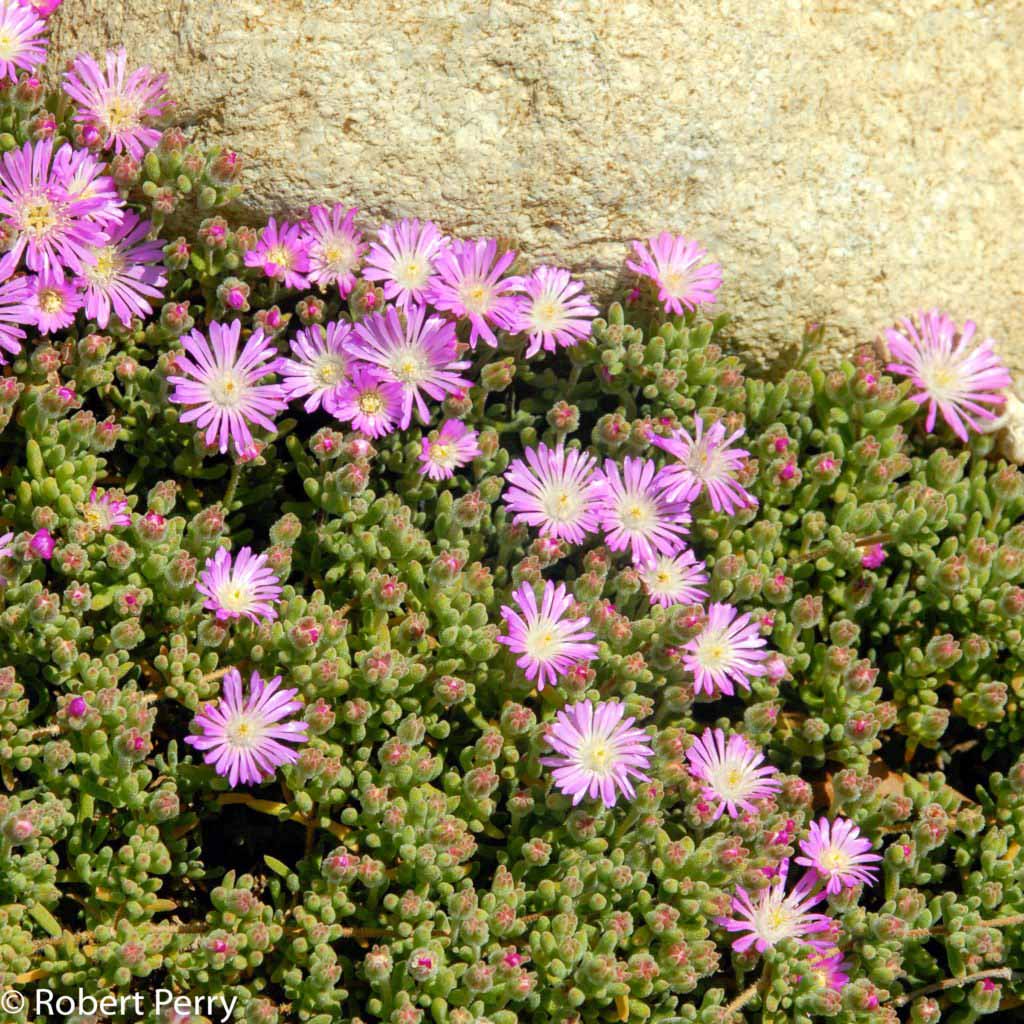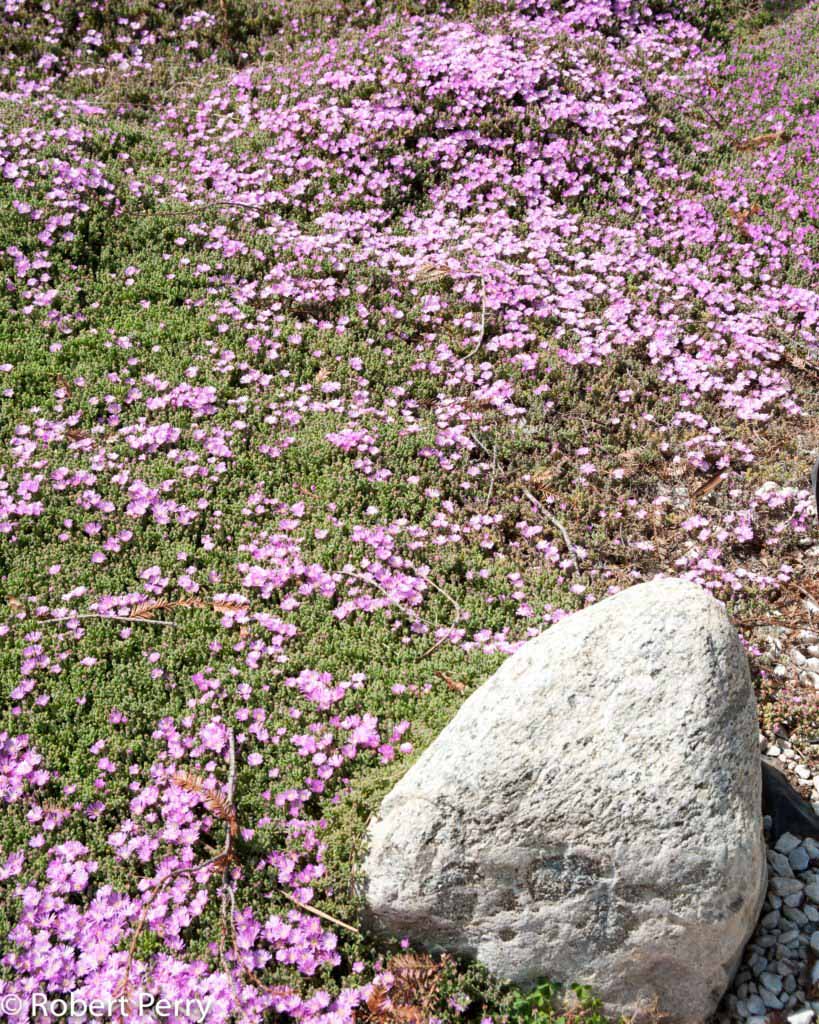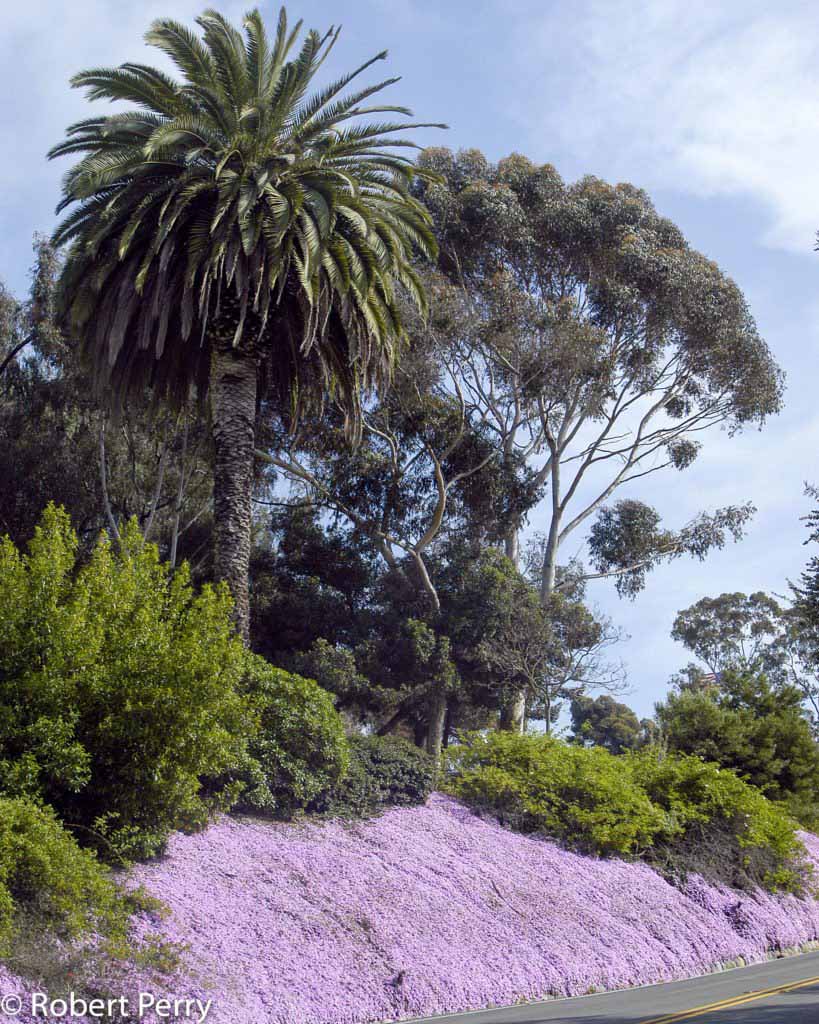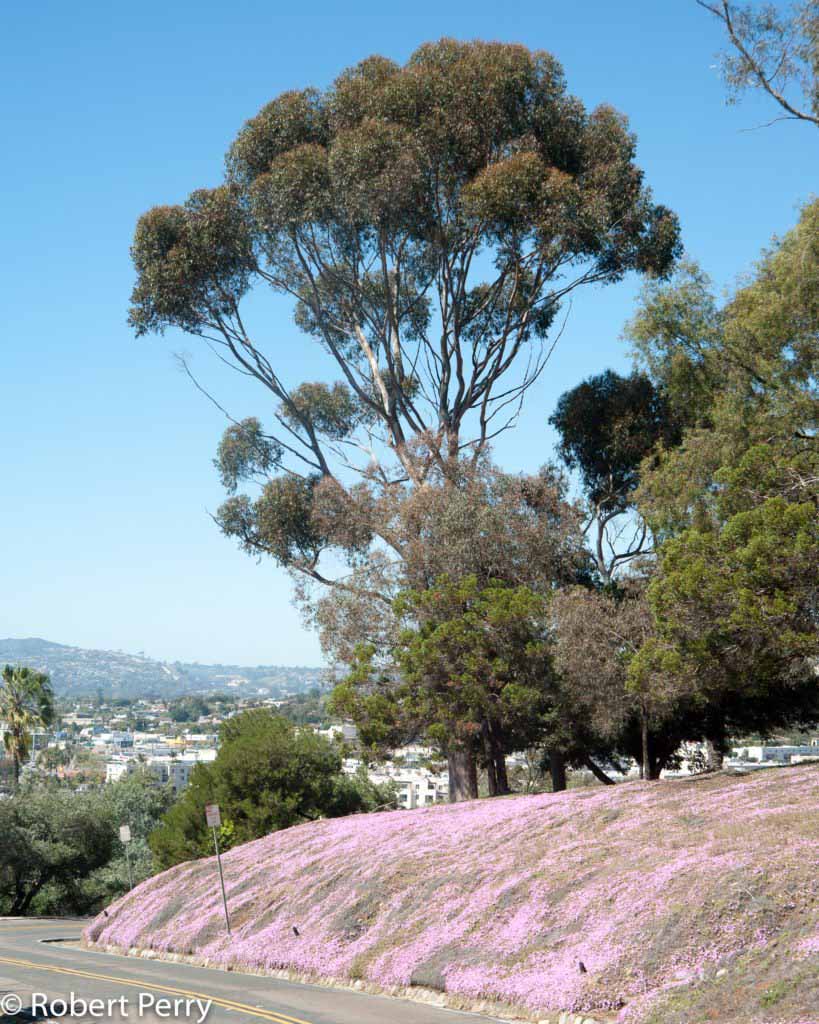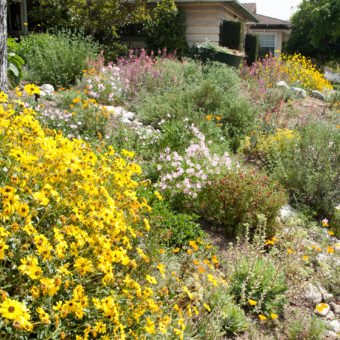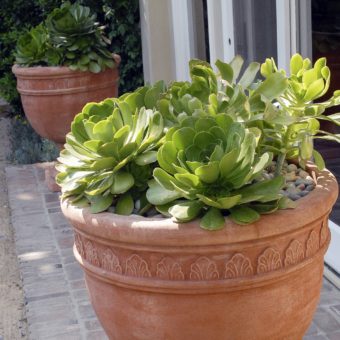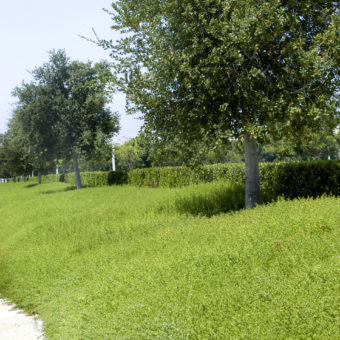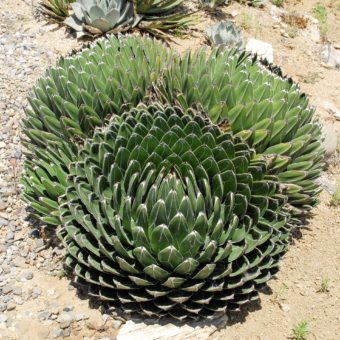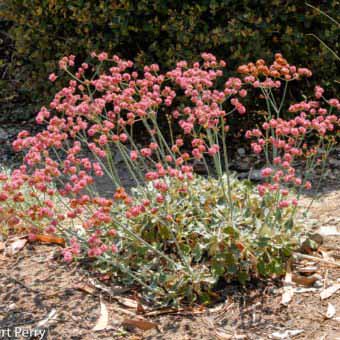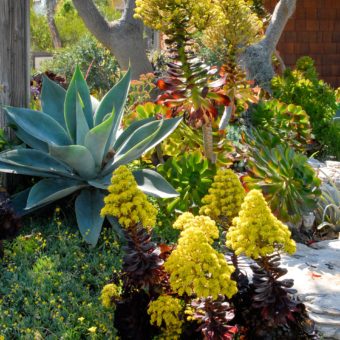Rosea ice plant is well adapted all parts of the Inland Empire in sunny exposures with normal winter rains and low amounts of summer irrigation. The chart shown below provides a recommended baseline guide to the monthly irrigation schedule and volume of supplemental water needed to maintain healthy growth throughout the average year. It should be noted there are several months indicated by an asterisk (*) when winter rains often provides sufficient moisture and irrigation is not needed. The high and low range of moisture indicates it can grow with varying amounts of water; little supplemental water is needed during summer.
| |
Jan* |
Feb* |
Mar* |
Apr |
May |
Jun |
Jul |
Aug |
Sep |
Oct |
Nov* |
Dec* |
| Runs per Month |
0x to 2x |
0x to 2x |
0x to 2x |
1x |
1x |
1x |
1x |
1x |
1x |
1x |
0x to 2x |
0x to 2x |
| Inches per Run |
1″ |
1″ |
1″ |
1″ |
1″ |
1″ |
1″ |
1″ |
1″ |
1″ |
1″ |
1″ |
| |
| Inches per Month |
0″ to 2″ |
0″ to 2″ |
0″ to 2″ |
1″ |
1″ |
1″ |
1″ |
1″ |
1″ |
1″ |
0″ to 2″ |
0″ to 2″ |
Range of supplemental summer water: 7"
Range of supplemental winter water: 0"-10"
| |
0″-2″ |
0″-2″ |
0″-2″ |
1″ |
1″ |
1″ |
1″ |
1″ |
1″ |
1″ |
0″-2″ |
0″-2″ |
| |
Jan* |
Feb* |
Mar* |
Apr |
May |
Jun |
Jul |
Aug |
Sep |
Oct |
Nov* |
Dec* |
For more information on how to use this Irrigation Schedule and Graph, follow this link.
For information how to calculate your irrigation system’s schedule and precipitation rate, please follow this link.
Trim edges and borders of plantings as necessary. Avoid allowing it to grow onto paved walkways because shoes stepping on the succulent leaves over concrete can create an instant slip hazard when stepped on.
After multiple years of growth, can develop a layer of dried thatch below the active growth that can actually present a fire hazard in fire prone areas. Areas can be replanted by trimming plants, saving the younger actively growing sections, pulling and disposing of the older growth portion, and planting the cuttings to re-root and grow out (D).
References